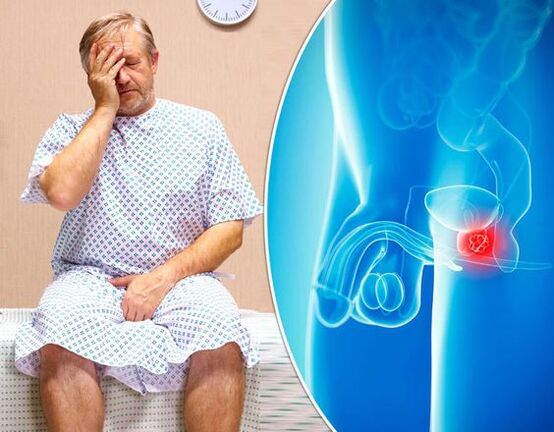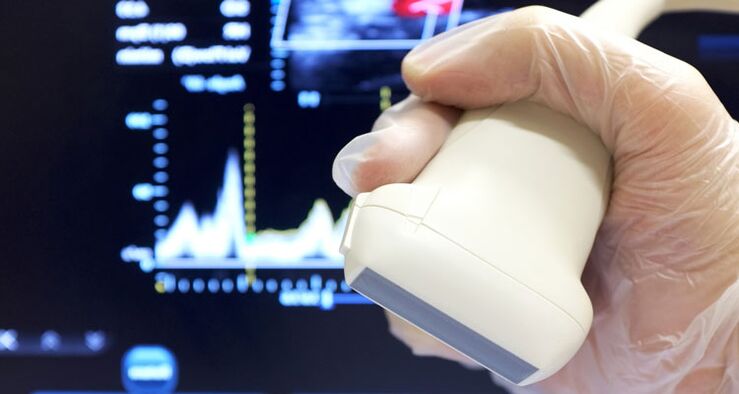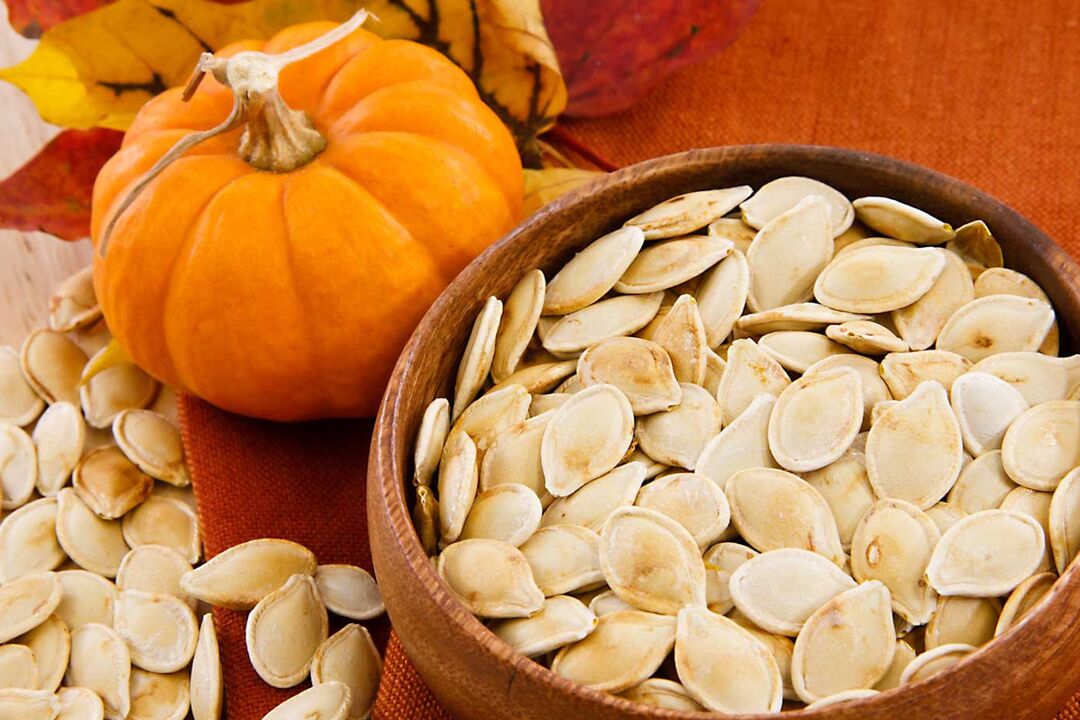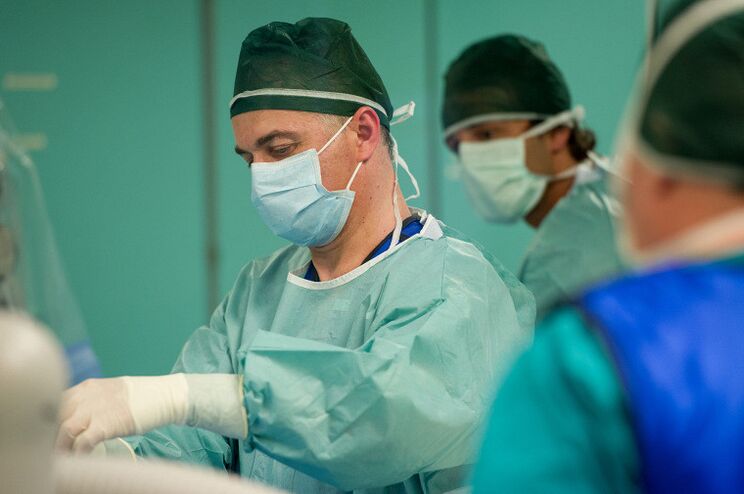The long -term inflammation of the prostatic gland, periodically aggravated is called chronic prostatitis.The constant inflammatory process directly affects the work of the prostate.

Chronic prostatitis is the most common pathology in men, which is observed in almost 30% of the stronger sex.
Classification of chronic prostatitis
- The acute prostatitis course.
- Chronic bacterial prostatitis.
- Chronic prostatitis is not bacterial.It is accompanied by chronic pelvic pain syndrome - symptoms that are not associated with the presence of infection.It lasts three months and more.
- III A - Chronic prostatitis with the presence of an inflammatory component (in the secret of prostate, infection and leukocytes are found).
- III B - Chronic prostatitis with the absence of an inflammatory component (pathogens and leukocytes in the prostate has not been found).
- Chronic prostatitis is asymptomatic (lackSymptoms in the presence of leukocytes in prostate secrecy).
The risk of the disease is increased in people
Not all men are subject to prostatitis.To the group at risk of acute prostatitis, the following category of people is included:

- which leads an intimate life irregular and also practices interrupted sexual intercourse as a means of preventing unwanted pregnancy.
- Work in offices and drivers (a sedentary lifestyle causes the stagnation of blood in the basin).Nicotine.
- Reasons
- Bacterial prostatitis
Hereditary predisposition.
Regular hypothermia.
- Long abstinence.
- Premature devastation of the bladder.
- A sedentary lifestyle.
- Genitorerinary system diseases (uretrite, pyelonephritis, cystitis).
- nerve diseases: chlamydia, gonorrhée,Trichomonase.
- Venous stagnation in the basin, caused by a sedentary lifestyle.
- Stagnation of blood in the veins, caused by a sedentary lifestyle.
- Stagnation du sang dans les veines, provoquée par un mode de vie sédentaire.
- Wearing small pants, underwear or shorts.
- Stagnant phenomena caused by the constant compression of the perineum.Sexual intercourse improves blood circulation in the prostate veins.
- Alcohol, nicotine, toxicomania.
- A sedentary lifestyle.
- Symptoms
A weak urine flow, discomfort during urination.

- A feeling of non -empty bladder.
- Net periodic pains.scrotum.
- Decrease in libido, low erection, rapid ejaculation.The morning involuntary erection disappears periodically or is completely absent.
- After intimacy, painful pain in the head of the penis may appear, which passes after about half an hour.
- Diagnosis
- In the presence of symptoms, the diagnosis of chronic prostatitis will not be difficult.With an asymptomatic pathology, in addition to the patient inspection or study of the patient, the use of additional research methods: laboratory and instrumental.It is necessary to determine the condition of the patient's immune and nervous systems.
- The questionnaires and questionnaires allow you to obtain complete information on the patient's health, the intensity of the pain, the urination, the ejaculation, the erection and the psycho-emotional mood.
Laboratory diagnosis
Laboratory diagnostic methods allow you to determine the chronic prostatitis of nature: Bacterial or abacterialpossible to establish the type of pathogen.If in the fourth urine sample or the secret of the prostate, the indicator of white blood cells in the PZ above 10, the chronic inflammation of the gland is confirmed.If bacteria are not sown with increased leukocytes, the material is examined for the presence of pathogens of the pit (sexually transmitted diseases).

Diagnostic de laboratoire
Les méthodes de diagnostic de laboratoire vous permettent de déterminer la prostatite chronique de la nature: bactérien ou abactérien, ainsi que le plus précisément possible pour établir le type de pathogène. Si dans le quatrième échantillon d'urine ou le secret de la prostate, l'indicateur des globules blancs dans le PZ au-dessus de 10, l'inflammation chronique de la glande est confirmée. Si les bactéries ne sont pas semées avec des leucocytes accrus, le matériau est examiné pour la présence d'agents pathogènes de la fosse (les maladies transmises sexuellement).
- A smear of the urethra is examined in the laboratory for leukocytes, fungal, viral or bacterial flora.The number of leukocytes, amyloid, macrophages and cowers-lalemana is calculated.In addition, an immunological and bacteriological study is carried out, with the help of which the number of non -specific antibodies is determined.
- Ten days after the study of the rectal finger, blood is taken to determine the level of the dog.If the level exceeds 4.0 ng / ml, the patient is prescribed by a prostate biopsy to confirm or exclude the presence of a malignant tumor in the gland.Ultrasound helps to exclude other diseases, to control the effectiveness of the therapy used, to determine the dimensions of the prostate, the organ structure of the organ, as well as the density and uniformity of the seed bubbles.Miography and urodynamic studies of the pelvic floor muscles help identify neurogenic disorders that often accompany chronic prostatitis.
- Tomodensitometry, tomography and MRI are used to install a differential diagnosis, in particular prostate oncology.These methods will help identify pathologies in pelvic organs or spine.In treatment, penicillin, fluoroquinol, cephalosporins, tetracycline, macrolides are used.They affect pathogenic microorganisms, accumulating in the tissues.Taking antibiotics allows you to reduce inflammation, eliminating the main cause of the bacterial form - infection.Antibiotics are produced in the form of tablets, candles or injections.
Le diagnostic est posé sur la base des résultats des études.
Diagnostic instrumental

Le tore de la glande vous permet d'identifier la forme et le stade de la pathologie. L'échographie aide à exclure d'autres maladies, à contrôler l'efficacité de la thérapie utilisée, à déterminer les dimensions de la prostate, la structure d'écho de l'organe, ainsi que la densité et l'uniformité des bulles de graines. La miographie et les études urodynamiques des muscles du plancher pelvien aident à identifier les troubles neurogènes qui accompagnent souvent la prostatite chronique.
La tomodensitométrie, la tomographie et l'IRM sont utilisées pour installer un diagnostic différentiel, en particulier l'oncologie de la prostate. Ces méthodes aideront à identifier les pathologies dans les organes pelviens ou la colonne vertébrale.
Traitement de la prostatite chronique
Médicament
- Médicaments antibactériens. Dans le traitement, la pénicilline, le fluoroquinol, les céphalosporines, la tétracycline, les macrolides sont utilisés. Ils affectent les micro-organismes pathogènes, s'accumulant dans les tissus. La prise d'antibiotiques vous permet de réduire l'inflammation, éliminant la principale cause de la forme bactérienne - l'infection. Les antibiotiques sont produits sous forme de comprimés, de bougies ou d'injections.
- Non-steroidal anti-inflammatory drugs.The averages are used at the initial stage of the disease.The main components of drugs: Diclofenac, Ketoprofen.Fine pain and eliminate inflammation.Mainly produced in the form of rectal candles.
- Antispasmodics.The analogues of these drugs are muscle relaxants.The active component is baclofen.It acts on smooth muscles, as a result of what pain and cramps are eliminated.
- Alpha-blockers.The effect of drugs allows you to eliminate pain and relieve cramps.The components, acting on nerve cells and blood vessels, relieve pain.The restored blood circulation nourishes the organ with the necessary substances.
This is the first group of drugs that is most effective.In addition, with prostatitis, experts prescribe the following drugs:

- anesthetic drugs.Often, prostatitis is accompanied by reins during urination and intense pain.It is recommended to use microclysters that directly affect iron.
- Hormones.Prostatitis can cause the hormonal system to function.
- Anticholinergic drugs.Normalize urination, increase power and restore blood circulation.
- Biological regulators.The expanses of the cattle prostate are the main components of the drugs.They help relieve swelling, reduce inflammation.
- Immunomodulators.The main reason for prostatitis is a decrease in immunity.Therefore, drugs that stimulate immunity are used in therapy.
- Sedding drugs.The disease causes power and erection problems.Symptoms are reflected in the psycho-emotional state of men.Soothing products restore the nervous system.These drugs should be prescribed to men who feel daily stress. In some cases, tranquilizers are prescribed, which can only be purchased by recipe.The dosage and the duration of admission are prohibited.
- Antihistamines.Remove reports from the gland.Contains narcotic substances, therefore independent intake is prohibited.

Folk remedies
- Pumpkin seeds.The raw pumpkin seeds are cleaned with the ball.They use 20 pieces before meals three times a day, for three to four months.
- Chamomile tea.It is recommended to prepare daily in a sufficient amount for daily use.Put a 30 g chamomile dish and pour it with boiling water (200 ml).Having insisted for half an hour, tender, thoroughly tightening the flowers.Divide the infusion into equal parts and drink per day.The tool eliminates pain and relieves inflammation in the male gland.
- 500 ml of honey Linden.Take 500 g of honey, aloe leaves and red wine.In glass dishes, connect aloe and chopped wine to honey.Insist in the refrigerator for a week.Drink dyeing on a teaspoon before meals.
- Western infusion.For half a glass of boiled water, take a drop of juice.Drink the solution in the morning after breakfast.Increase the dose daily.The maximum dose is 30 drops.Then reduce the dosage of a drop a day.At the end of the course, a two -week break is taken, after which the medication can be taken again.
- Persil juice.To treat chronic prostate, rods and parsley leaves are finely collapsing or grinding in a mortar.Put the mass on the gauze and compose the juice formed.Take medication before meals, preferably in 30 minutes.The dose of juice for reception is one or two tablespoons.Reception frequency three times a day.
- Propolis.Propolis dye for alcohol is taken for chronic prostatitis for six months.Grate a piece of propolis on a slightly 100 g fine.The crushed mass pays 200 ml of pure medical alcohol.Place the solution in a glass container and store for at least 10 days in a dark place, trembling every three days.Filter the dye.
The candles made from propolis reduce inflammation in the gland, relieve pain and restore all the cells of the organ.Gelz 7 grams of propolis and shake finely.Melt a hundred grams of goat fat and connect it with propolis.From the cooled mixture, make candles, 1.5 to 2 cm long.

Diet
During chronic prostatitis, you should not fall into extremes and exclude the products.The food must be full, so that a man can receive all the vitamins, minerals and substances and beneficial trace elements necessary.Nutrition restrictions can lead to the fact that iron will not receive important elements necessary for its quality work.The patient's diet with chronic prostatitis should consist of easily absorbed products so that the body does not pass much efforts to digestion of food.Forces are necessary for the body to fight pathology.They do not recommend practicing famine without accepting this with a specialist.The refusal of food will lead to a break in forces, which is unacceptable for a patient with a chronic form of prostatitis.It is recommended to have fasting days.Poor nutrition can disrupt the prostate gland, so that the adjustment of the daily diet is included in the treatment.
Surgical treatment

Endoscopic intervention is a modern method of surgical treatment, in which invasive intervention is minimized.The patient's rehabilitation occurs faster.It is indicated when blocking the output and seed conduits, the sclerosis of the seed tubers.The operation is indicated in the diagnosis of prostate sclerosis and the seed bubble, the presence of calcine in the gland, the adenoma.If during the operation, the secret is dense, serous and viscous, then the gland is completely eliminated with an electric cut, leading the punctual coagulation of the blood vessels and the installation of the trocar cystostom.With the exacerbation of pathology, surgery is strictly contraindicated.
Physiotherapeutic treatment
- Thermotherapy - Using specific equipment, perform a uniform controlled heating of the male gland and the urethra.The procedure is carried out by a track or a transrectal method, when heated through the rectum or the urethra.Thermal exposure improves the local arterial and capillary blood flow, increases the number of functionally active capillaries, increases the body protection properties, stimulates the lymphatic flow and the flow of harmful particles as much as possible and optimizes local metabolism.
- Laser therapy - The course of treatment is determined individually, according to the shape and stage of the pathology.On average, five to seven procedures are sufficient.Act on the organ through the skin or transrectal.Promotes the rapid recovery and stop symptoms.
- The ablation of the needle is an ambulatory clinic.Used to eliminate prostatitis symptoms.

Other treatment methods
- Prostate massage - helps heal and prevent the development of the disease.The procedure is carried out by a specialist using antiseptics and aseptics to eliminate the infection entering the organ.It can cause acute delay in urine and the spread of inflammation (up to sepsis) if hyperplastic changes are observed in the organ.Massage is contraindicated with the expressed stagnation of blood in the veins the presence of stones and cysts in the prostate.The best way to rid a prostate of stagnant secretion is natural ejaculation.
- Gymnastics for the bladder - when it has weakened the muscle tone of the bladder and its sphincter, urine incontinence is observed.Special exercises are effective in eliminating these symptoms.To make the procedure painless, local anesthesia is carried out.The specialist determines the number of sessions individually.This can lead to the development of complications.
- Prevention
Simple rules for the prevention of chronic prostatitis:

Chronic stage is always a consequence of acute prostatitis diagnosed late, wrongly treated or undertaken.Therefore, you must regularly undergo the prosecutor's examination with a urologist.
- Protect the pelvic area of hypothermia and injuries.
- Get rid of bad habits.
- Conduct an active lifestyle.It is necessary to observe simple preventive measures to reduce the risk of pathology.
- Évitez les situations stressantes.
Tout homme peut développer une prostatite chronique. Il est nécessaire d'observer des mesures préventives simples afin de réduire le risque de pathologie.























